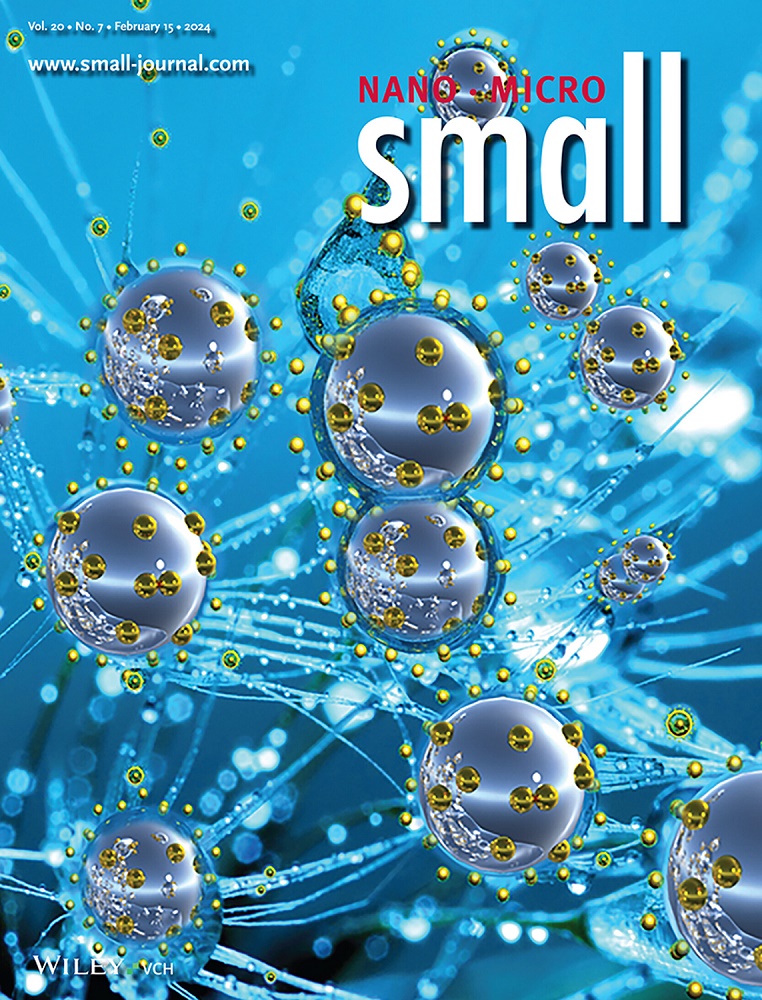Engineering TLR7/8 Agonist-Loaded and Tumor-Anchored Gold Nanosensitizers for Enhanced Radioimmunotherapy.
IF 13
2区 材料科学
Q1 CHEMISTRY, MULTIDISCIPLINARY
引用次数: 0
Abstract
Immunomodulators that can amplify the in situ vaccine effect by regulating radiation-induced immunosuppression have been proven to play a pivotal role in improving the radioimmunotherapeutic efficacy of tumors. Nevertheless, they still face challenges to be addressed for effective tumor radioimmunotherapy, such as poor tumor specificity, rapid clearance from lesions, and potential side effects. Herein, a folate receptors (FRs)-targeting and protein sulfenic acid (PSA)-reactive gold nanosystem FA-dAu-CDR is rationally designed and fabricated in which the toll-like receptor 7/8 immunoagonists are loaded through amphiphilic β-cyclodextrin (β-CD). Taking advantage of the specific covalent reaction between PSA and 1,3-cyclohexanedione (CHD) on the surface of AuNPs, this nanosystem can not only specifically target the tumor to deliver R848 agonist efficiently, but also realize high accumulation and prolonged retention of nanoparticles based on the covalent anchoring. More notably, by combining PD-L1 blockade and radiation therapy, enhanced radioimmunotherapy for both primary and distant colon tumors is achieved in living mice. Therefore, these findings offer a universal and powerful nanoplarform for effective radioimmunotherapy of malignant tumors.工程TLR7/8激动剂负载和肿瘤锚定金纳米增敏剂用于增强放射免疫治疗。
免疫调节剂可以通过调节辐射诱导的免疫抑制来增强原位疫苗效应,已被证明在提高肿瘤的放射免疫治疗效果中起着关键作用。然而,有效的肿瘤放射免疫治疗仍面临挑战,如肿瘤特异性差、病灶清除迅速、潜在的副作用等。本文合理设计并制备了一种叶酸受体靶向蛋白磺酸反应金纳米系统FA-dAu-CDR,其中toll样受体7/8免疫激动剂通过两亲性β-环糊精(β-CD)负载。利用PSA与1,3-环己二酮(CHD)在AuNPs表面的特异性共价反应,该纳米系统不仅可以特异性靶向肿瘤高效递送R848激动剂,还可以基于共价锚定实现纳米颗粒的高蓄积和长时间滞留。更值得注意的是,通过结合PD-L1阻断和放射治疗,在活体小鼠中实现了原发性和远处结肠肿瘤的增强放射免疫治疗。因此,这些发现为恶性肿瘤的有效放射免疫治疗提供了一个通用的、强大的纳米平台。
本文章由计算机程序翻译,如有差异,请以英文原文为准。
求助全文
约1分钟内获得全文
求助全文
来源期刊

Small
工程技术-材料科学:综合
CiteScore
17.70
自引率
3.80%
发文量
1830
审稿时长
2.1 months
期刊介绍:
Small serves as an exceptional platform for both experimental and theoretical studies in fundamental and applied interdisciplinary research at the nano- and microscale. The journal offers a compelling mix of peer-reviewed Research Articles, Reviews, Perspectives, and Comments.
With a remarkable 2022 Journal Impact Factor of 13.3 (Journal Citation Reports from Clarivate Analytics, 2023), Small remains among the top multidisciplinary journals, covering a wide range of topics at the interface of materials science, chemistry, physics, engineering, medicine, and biology.
Small's readership includes biochemists, biologists, biomedical scientists, chemists, engineers, information technologists, materials scientists, physicists, and theoreticians alike.
 求助内容:
求助内容: 应助结果提醒方式:
应助结果提醒方式:


